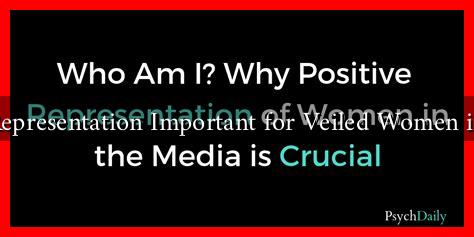-
Table of Contents
Why Is Representation Important for Veiled Women in Media?
In an increasingly globalized world, media plays a pivotal role in shaping perceptions and narratives about various communities. For veiled women, representation in media is not just a matter of visibility; it is a crucial aspect of identity, empowerment, and social acceptance. This article explores the importance of representation for veiled women in media, highlighting its impact on societal attitudes, self-identity, and the broader implications for gender equality.
The Power of Representation
Representation in media refers to the portrayal of different groups in a way that reflects their realities, experiences, and diversity. For veiled women, who often face stereotypes and misconceptions, accurate representation is vital for several reasons:
- Challenging Stereotypes: Media often perpetuates negative stereotypes about veiled women, portraying them as oppressed or submissive. Positive representation can challenge these narratives and showcase the diversity of experiences among veiled women.
- Empowerment: Seeing relatable characters in media can empower veiled women by providing role models who reflect their values, aspirations, and struggles.
- Fostering Understanding: Representation can foster understanding and empathy among non-veiled audiences, breaking down barriers and promoting dialogue.
Case Studies: Positive Representation in Action
Several media projects have successfully showcased veiled women in a positive light, contributing to a more nuanced understanding of their lives.
- “The Secret Life of Muslim Women”: This documentary series highlights the diverse experiences of Muslim women, including those who wear the hijab. By sharing their stories, the series challenges stereotypes and promotes a more comprehensive understanding of their lives.
- “Ramy”: This critically acclaimed television series features a Muslim-American protagonist navigating life, faith, and identity. The show includes strong female characters who wear the hijab, presenting them as complex individuals with their own narratives.
- Social Media Influencers: Platforms like Instagram and TikTok have given rise to a new generation of veiled women influencers who share their fashion, lifestyle, and personal stories, reshaping public perceptions and inspiring others.
The Impact of Lack of Representation
The absence of veiled women in media can have detrimental effects, both for the individuals themselves and for society at large. Some of these impacts include:
- Reinforcement of Stereotypes: Without diverse representation, negative stereotypes can become entrenched, leading to discrimination and social exclusion.
- Marginalization: Veiled women may feel marginalized and invisible, leading to a lack of self-esteem and identity crises.
- Limited Opportunities: The lack of representation can limit opportunities for veiled women in various fields, including media, politics, and business.
Statistics and Research Findings
Research indicates that representation matters significantly. A study by the Geena Davis Institute on Gender in Media found that:
- Women of color are often underrepresented in film and television, with only 17% of speaking roles going to women of color.
- When women are portrayed in media, they are often depicted in stereotypical roles, which can influence societal attitudes and expectations.
Furthermore, a report by the Pew Research Center found that 62% of Americans believe that media representation affects how people view different cultures and communities. This underscores the importance of diverse and accurate portrayals of veiled women in media.
Conclusion: The Path Forward
Representation is crucial for veiled women in media, as it shapes societal perceptions, empowers individuals, and fosters understanding. As media continues to evolve, it is essential for creators, producers, and audiences to advocate for diverse and accurate portrayals of veiled women. By doing so, we can challenge stereotypes, promote inclusivity, and contribute to a more equitable society.
In summary, the importance of representation for veiled women in media cannot be overstated. It is a vital step toward achieving gender equality and fostering a society that values diversity and inclusion. As we move forward, let us strive to amplify the voices of veiled women and ensure their stories are told with authenticity and respect.
For further reading on the importance of representation in media, you can visit Geena Davis Institute on Gender in Media.




